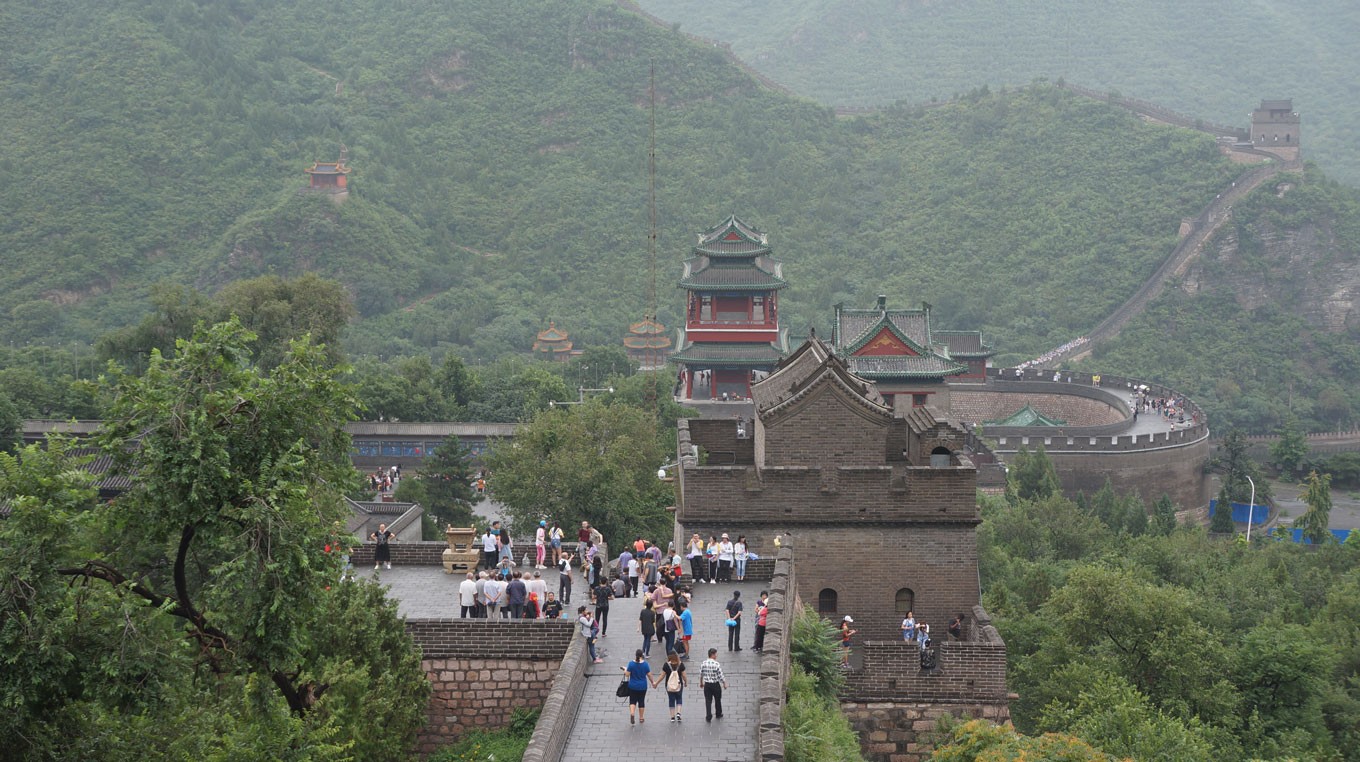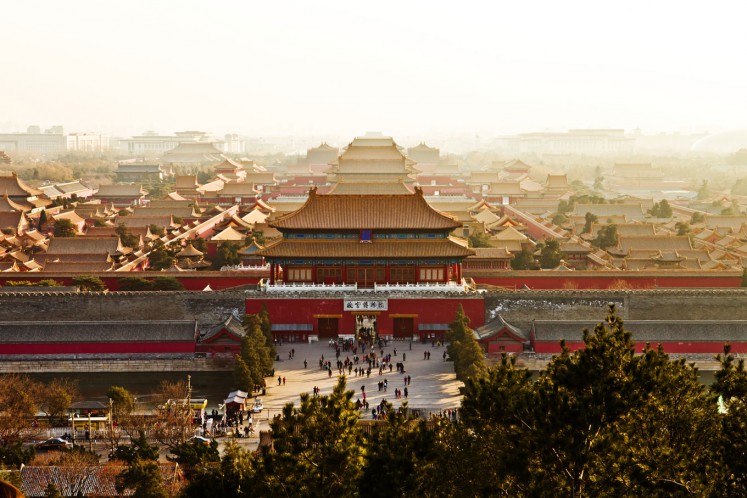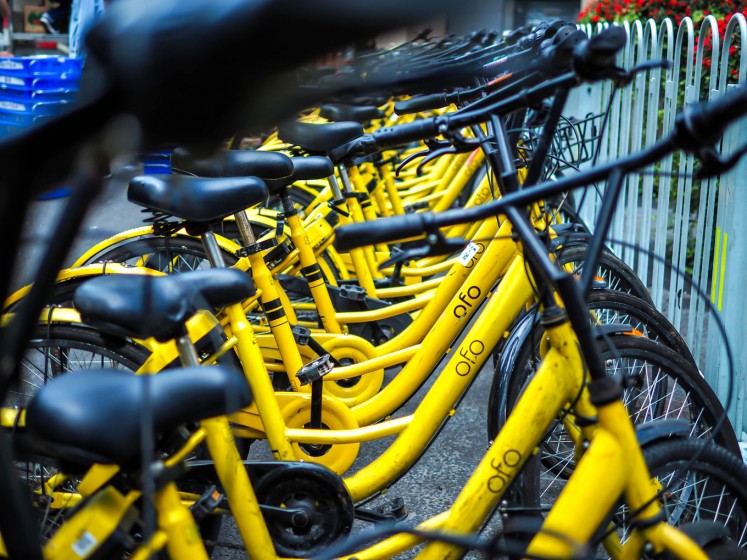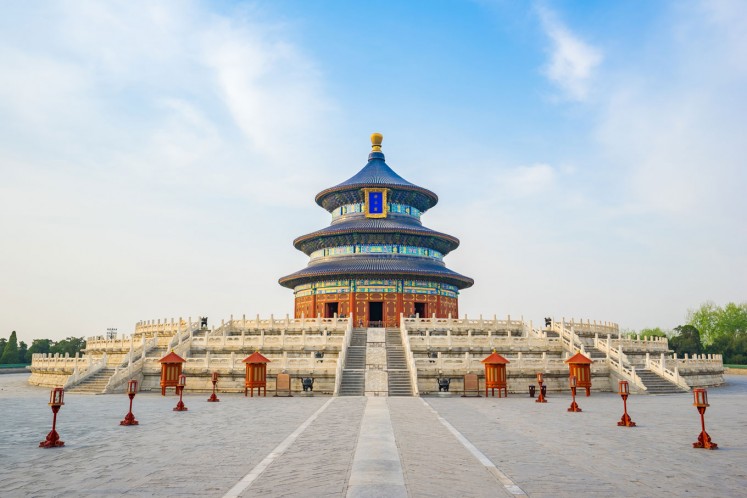Popular Reads
Top Results
Can't find what you're looking for?
View all search resultsPopular Reads
Top Results
Can't find what you're looking for?
View all search resultsChina: One foot in the past and both eyes on the future
As it moves into a technological future, China continues to preserve the monuments of its impressive history, such as its centuries-old intricately decorated temples and charming ancient palaces that were once occupied by majestic dynasties.
Change text size
Gift Premium Articles
to Anyone
T
he Jakarta Post’s Liza Yosephine recently visited Beijing, Chengdu, Shenzen and Guangzhou following an invitation from the Chinese Embassy in Jakarta. Here is her report.
As a land of centuries-old intricately decorated temples and ancient palaces once occupied by majestic dynasties, China preserves its impressive history while keeping a keen eye on the future.
The charm of the past may be among the main reasons tourists continue to visit the country, seeking a first-hand glimpse into its rich culture, but a taste of the contemporary is also inevitable.
For many travelers who do not speak Mandarin, visiting China would be most convenient in a tour group, where itineraries are pre-organized, including trips to the usual tourist attractions as well as prearranged main meals throughout the day. This was the case with the six days I spent in China as part of a recent group trip at the invitation of the Chinese Embassy in Jakarta.
But what happens when you choose to venture out during your free time to shop or buy snacks and interact with the locals?
As Beijing is a global city, you would think that ordering a bubble tea at a fast food chain would be a simple task for foreign visitors. However, such ordinary interactions can be difficult when a language barrier stands in the way.
Luckily, this obstacle was surprisingly easy to overcome with the help of a speech translation app.
Read also: Beijing's new airport comes with new construction tech
Furry Citra, a 27-year-old actress and social media influencer and part of the travel group, simply opened her translation app and held her mobile phone up to the cashier.
Without hesitation, the attendant spoke directly into her phone, which subsequently provided a translation from Mandarin into English.
"Turns out she was asking whether I wanted a cold one or a hot one," Furry said, before speaking into her phone to request a cold drink.
The ease of this technology-mediated interaction was only a glimpse of the extent to which Chinese society has embraced technology in everyday life. The capital city is filled with CCTV cameras on every corner looking at every angle, while everything from retail transactions to hiring bicycles is cashless, requiring only a QR code and a mobile phone.
Still, despite being very much a future-orientated society, the country has not forgotten its past, and Beijing's iconic structures such as the Great Wall, Forbidden City and Temple of Heaven remain world-renowned tourist attractions.
Our local tour guide in Beijing, Tan Xuyang, emphasized strongly the importance the government placed on its efforts to preserve the country’s historical sites and buildings, with the risk of fire an ever present danger.
Ancient Chinese architecture predominantly used wood instead of stone to build houses, temples and gardens, meaning many buildings are extremely vulnerable to fire.
"Smoking is strictly prohibited at tourist attraction complexes, so you better store your lighters and cigarettes or risk having them confiscated," Tan Xuyang said.
While China does not yet have laws prohibiting smoking in public places, several cities have bylaws on tobacco control.
He explained that the largest building in the Temple of Heaven Park, the circular-shaped Hall of Prayer for Good Harvests, was made entirely from wood, without the use of a single nail, and was an ode to China’s innovative approach to design at the time of its construction.
The complex of religious buildings was once used by emperors to hold prayer ceremonies and is now one of Beijing's most recognizable sites.
Another icon we visited, which also needs to be protected from the risk of fire, was the Forbidden City, also known as the Palace Museum. The royal complex is listed by UNESCO as the largest collection of preserved ancient wooden structures in the world. Spanning 72 hectares, the vast palace was home to past emperors, concubines and served as the center of government.
Read also: The Palace Museum in China has a new virtual city app
Fast forward to the early 21st century and the country has built another iconic landmark, this time from exposed steel – the National Stadium. The country sought out innovative designs for the creation of its premier sporting venue with the aim of impressing the world when it hosted the 2008 Summer Olympics.
The external shell of the stadium is reminiscent of a large nest, leading the stadium to be nicknamed the "Bird's Nest".
The country’s innovation is pushed even further down in southern China, especially in the country's modern metropolis of Shenzen, home to the headquarters of numerous home grown multinational tech companies such as telecommunication giant Huawei and artificial intelligence and robotic company UBTECH.
Once a simple fishing village, Shenzen has been transformed into one of China's wealthiest cities after being designated a Special Economic Zone as part of the country's reform and opening-up policy. Today, Shenzen is a popular shopping destination for tourists.
Meanwhile, in the next town over of Guangzhou, a roughly 30-minute high-speed railway trip at 300 kilometers per hour away, travelers can enjoy another of the country's best shopping destinations, the Beijing Road Shopping District. However, if you're looking for a bargain, you won't find it at shopping centers in China, as prices are similar to Jakarta.
Read also: Chengdu tops list as China's happiest city
Back to nature
No visit to China is complete without paying a visit to one of the country's most famous residents - the giant pandas.
To do so, head out to the country’s southwest, where the Sichuan province city of Chengdu greets travelers with its cool climate and quieter side of life, a stark contrast to big cities like Beijing, where you will start to feel hot and sticky in summer.
The province is home to 80 percent of the world's wild panda population, as the famously adorable bear-like creatures are most comfortable in cool climates below 26 degrees Celsius.
The Chengdu Research Base of Giant Panda Breeding is among the province’s most popular attractions, and guests can get up close and personal with giant pandas as well as red pandas in a lush and laid-back environment, while strolling through the expansive park grounds that serve as a research and conservation facility.
In the center of Chengdu city, Jinli Street is a restored laneway featuring traditional-style buildings and numerous stalls and shops that sell local snacks, art and handicrafts for visitors to enjoy.
Sichuan cuisine is another of the region's greatest attractions, with Chinese people throughout the country hailing the flavorful and spicy food as the nation’s best. (kes)












